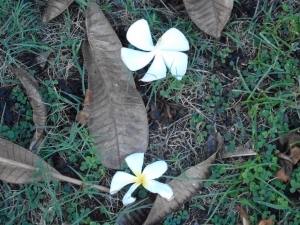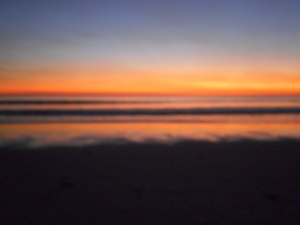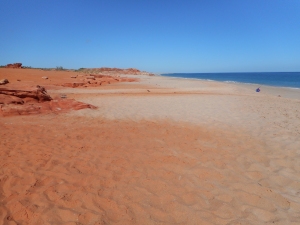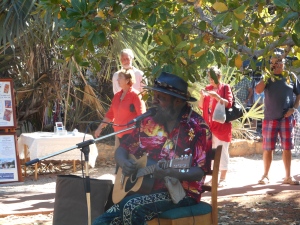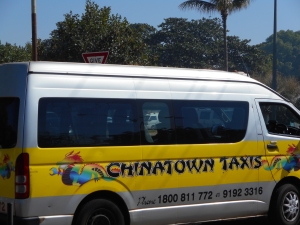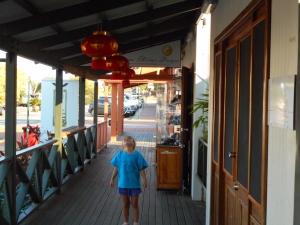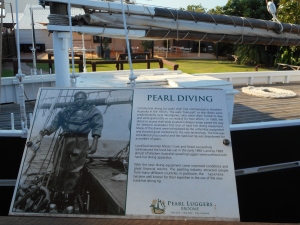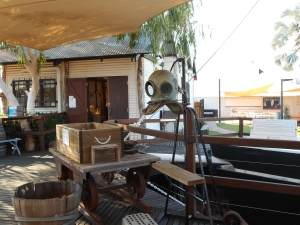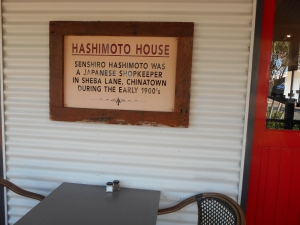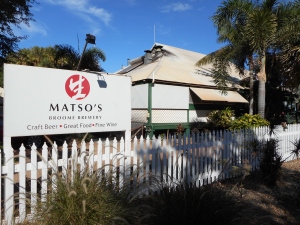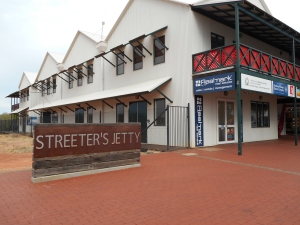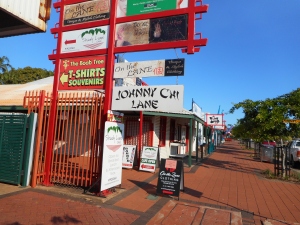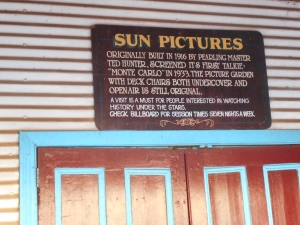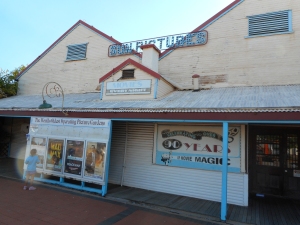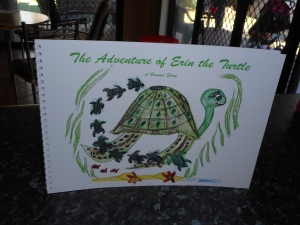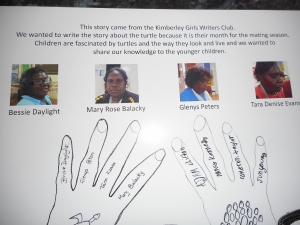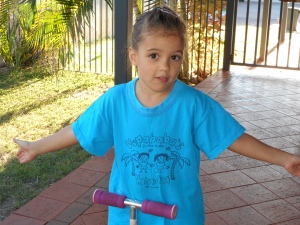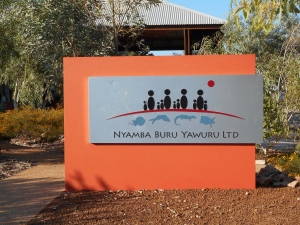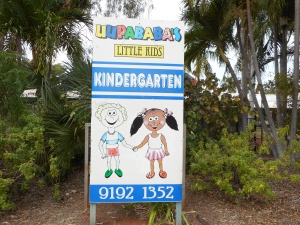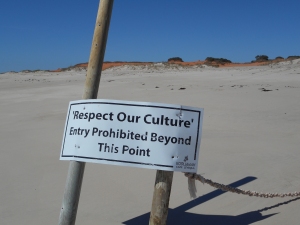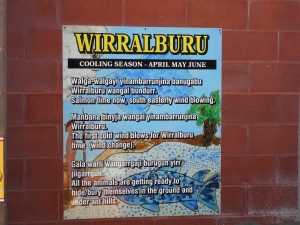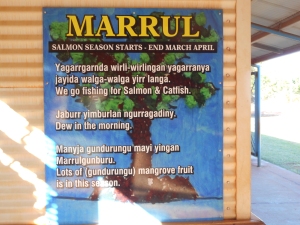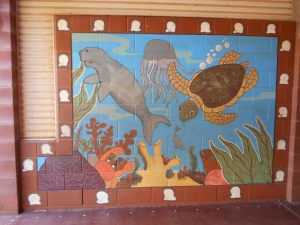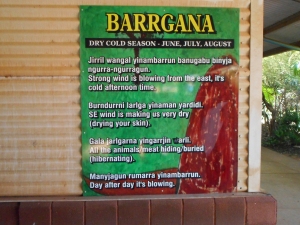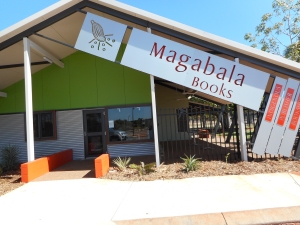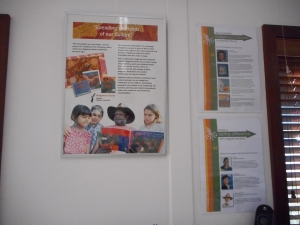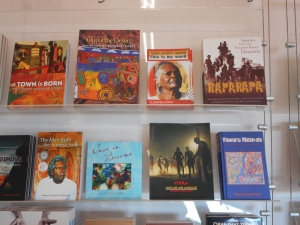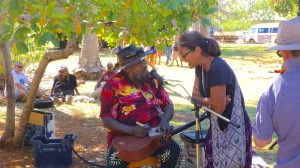I have brought home Broome tunes on a CD. Tunes as joyful as scarlet hibiscus and as melancholy as the last lick of terracotta sun slipping into the cobalt depths of the Indian Ocean. Tunes that smell of saltwater and fallen frangipani, tunes that take us down streets of a blended history where past and present dance across cultural boundaries and Indigenous faces are labelled with Asian names.
This lively mixture of music ranging from time honoured classics like Begin the Beguine and What a Wonderful World to beautiful melodic poems by The Pigram Brothers (an Indigenous country folk/rock band) is performed by Stephen Baamba Albert, a legendary Indigenous entertainer with a gravelly, well used voice. He sings songs which tumble me back to the sound of guitars and ukuleles played by my Eurasian relatives on tropical verandahs in Malaysian twilight.
As I listen to Baamba and The Pigram Brothers performing at a wonderful outdoor music and film event, A Taste of Broome, I remember the easy voices of my uncles, aunties and cousins singing songs redolent with Polynesian rhythms, sweet harmonies and lyrics that rolled and spilled in and out of languages from English to Malay to Portuguese. I hear the echo of their music in Broome – a place where Indigenous and Asian Australia muddle along in a colourful shared history and the account of European settlement is tacked loosely around the edges of a much more complex tapestry of mingled cultures.
At A Taste of Broome I talk to an old Malay man who came here sixty years ago from Singapore. He cooks chicken curry at local events. In a nearby stall one of the last Indonesian pearl divers grills delicious satay for queues of tourists. Later I watch a grainy black and white film of a young Malay pearl diver putting on a diabolically heavy mask before dropping into the Arafura Sea. The Indigenous musicians sing the poignant song: Selamat Tinggal my Nona Manis (Farewell to you my Sweetheart) to accompany this clip. I am sobbing by the end of their song.
Selamat tinggal my nona manis
Don’t forget, Jangan lupa kepada saya…
For in my heart I’ll always think of you
Saya mau mimpi kepada sayang…
Forget not me…
I’ll come home to you from the Arafura Sea
Broome is a place where Asian Australians feel like they have come home. Everywhere in this town we see the colourful footprint of a marvellous, rich blended history. Hashimoto House in the centre of Chinatown accommodates our favourite coffee spot, Dragonfly Café, and the iconic brewery Matso’s is named after Philip Matsumoto (the son of a Japanese diver named Kakio Matsumoto). We stroll down Johnny Chi Lane and dip into the restaurants and shops on Sheba Lane which were once opium dens, brothels and mah-jong palaces. Close by, Roebuck Bay and Streeter’s Jetty recall the glory and tragedy of the pearling industry in which Asian and Aboriginal divers were cruelly sacrificed for highly desired pearl shell. Fong’s store (a remnant of old Broome) is much loved and pearl meat blachan (a pungent Malay condiment) is relished by everyone.
One balmy evening we make our way to Sun Cinema (which was once a store owned by the Yamasaki family) and watch a film under the starry night sky. This is the oldest picture garden operating in the world and it seems like nothing has changed here since it was established in 1916.
At the centre of this Asian melee sits Yawuru culture. Yawuru language is taught in all the government primary schools and the Yawuru Cultural Centre is a tranquil haven which is well worth a visit. I was lucky enough to be invited to a community event at the local library and bought a picture book titled The Adventure of Erin the Turtle written by a group of Aboriginal women. My little granddaughter goes to a pre-school called UUpababa’s (the Yawuru word for children) and she had her face painted in traditional colours by a Yawuru aunty for Naidoc Week.
We attend an outdoor assembly at Cable Beach Primary School. Broome’s multicultural history is there in the faces of children, parents and teachers and in the enchanting roll call of Broome surnames: Hamaguchi, Matsumoto, Bin Saleh, Bin Omar, Pigram and Fong . These names remind us of the turbulent multicultural history of this pearling town. Indigenous culture is palpably present on the walls of the school. Here we see the six seasons of Broome represented in Yawuru language (Mangala, Marrul, Wirralburu, Barrgana, Wirlburu and Laja) and children belong to four factions (not houses or teams) with Yawuru names.
Magabala bookshop which publishes books by Aboriginal writers sits like a brightly coloured fruit in the heart of town and reminds us that there were stories in this land long before Europeans set foot here. Towards the end of my visit, I catch up with the wonderful Baamba at Broome Markets where he says to me with a twinkle in his eye, “We did multiculturalism in Broome long before it was mentioned in the rest of Australia.” He is absolutely right. The ridiculous notion of a white utopia (that underpinned the federation of Australia) was always a foolish absurdity in this “town by the bay.”
In Broome I feel my feet sink firmly into the ancient red earth of a country where First Australians sing heartfelt songs in the language of my Asian ancestors and my grandchildren learn to speak beautiful Indigenous words.
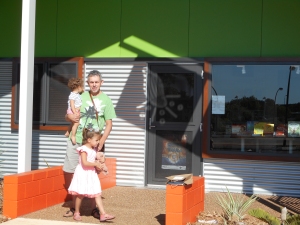
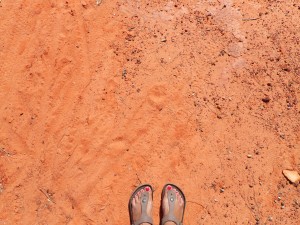
mabu buru, mabu liyan, mabu ngarrungunil ~~
good country, healthy feeling, strong community
(www.yawuru.com)
© Anita Patel, 2015
